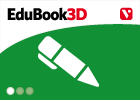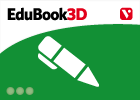Cargando...
Recursos educativos
-
Nivel educativo
-
Competencias
-
Tipología
-
Idioma
-
Tipo de medio
-
Tipo de actividad
-
Destinatarios
-
Tipo de audiencia
-
Creador
Lo más buscado
- Comunidades autónomas
- Ejercicios escolares para niños de 4 años
- Experimentos de anatomía
- Ejercicios de inglés quinto primaria
- Panda
- Cómo hacer
- Imprimir lecturas comprensivas
- La industria alimentaria
- Los Lunnis
- Experimentos caseros
- actividades inglés primaria
- Descargar ejercicios de música para niños
- cuentos inglés infantil
- El Alto Imperio romano
- Actividades imprimibles para primaria
-

Answer. Inequalities in the global population
EduBook Organización
- 5247 visitas
Answer the following questions: Is today's global population growing at the same rate as in the 20th century? Why or why not? What is the main characteristic of the evolution of population in…
-

Entry test 03 - The legacy of classical culture
EduBook Organización
- 5177 visitas
Are the following statements true or false? There was an acropolis and an agora in Athens. The Romans were great builders and engineers. Aristotle was a very important philosopher in ancient Greece. The…
-

The distribution of the global population
EduBook Organización
- 5087 visitas
1.1. Population distribution There are about seven billion inhabitants on the Earth. However, they are distributed unevenly around the world. Population density measures how many inhabitants (inhab.)…
-

Answer. Baroque art. Architecture
EduBook Organización
- 5008 visitas
Review what you have studied and do the following activities: Summarise the main contribution that the Baroque style made to art. How was it different from Renaissance art? List the characteristics of…
-

Introduction - The Animal Kingdom (I). Invertebrates
EduBook Organización
- 1 lo usan
- 4757 visitas
Today our planet is home to a great variety of organisms. This is the result of an evolutionary process that began some 3.5 billion years ago. Invertebrates are a very diverse group of animals that do…
-

Before you start - Art in the 19th century
EduBook Organización
- 4903 visitas
Didactic objectives Know, analyse and explain the main art movements of the 19th century. Analyse the artistic features of the works studied in each movement: Rococo, Neoclassical, Romanticism, Realism,…
-

Self-evaluation 5.06 - The Great Peninsular Kingdoms
EduBook Organización
- 4881 visitas
Choose the correct answer: Which Aragonese monarch incorporated Pamplona into his kingdom? What was the significance of the Battle of Navas de Tolosa? What was the role of the Cortes in the Crown of…
-

Answer the questions
EduBook Organización
- 4837 visitas
Answer the questions: Look at the photos. What are the people making? Which photos show people working on a farm? What is the main ingredient of bread? Where does this come from? What job do you want to…
-

Check. Mining and the railway network
EduBook Organización
- 4751 visitas
Remember what you have studied in this section and answer the questions: What were the main mineral deposits in Spanish mines in the 19th century? How were these deposits exploited? Describe the shape…
-

The leaves make the food for the plant
EduBook Organización
- 4754 visitas
3.1. The anatomy of leaves Most plants have flat green leaves. The main part of the leaf is called the blade. The part that connects it to the stem is the petiole (figure 1). The veins which transport…
Te estamos redirigiendo a la ficha del libro...












